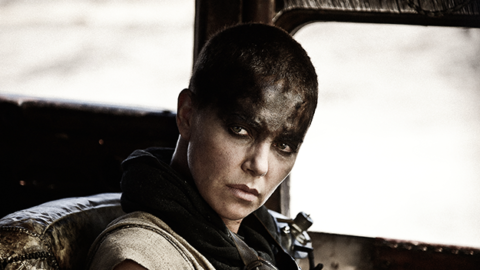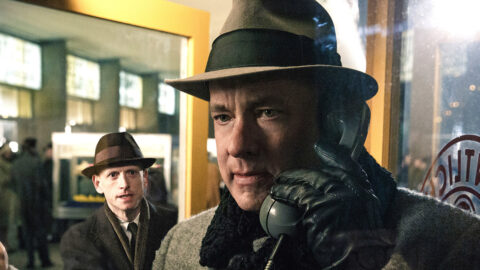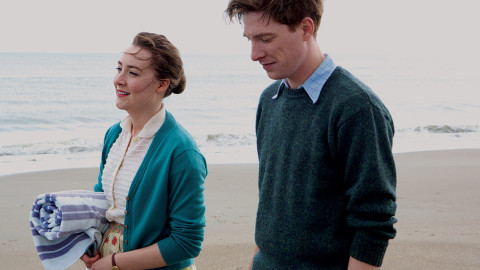Essential Films: Mad Max: Fury Road
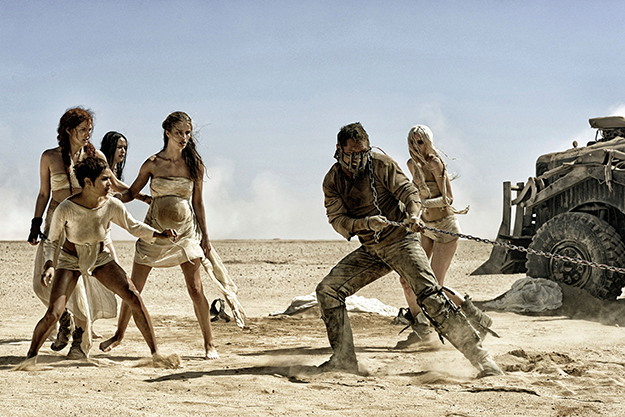
Fourth installments of franchises aren’t typically associated with quality, or any ambition grander than scraping those last few dollars from the bottom of the barrel. Yet George Miller’s Mad Max: Fury Road upends all expectations—about how action sequences are composed, what themes a blockbuster can contain, or who a film’s actual protagonist can be—and puts most other filmmakers working on this scale to shame.
In line with the postapocalyptic scarcity its characters deal with on a daily basis, the plot of Fury Road is a stripped-down there-and-back chase film. But what happens during that pursuit is anything but spartan—it’s a testament to the power of visual storytelling and what cinematic spectacle can aspire to.
First glimpsed standing beside his iconic ’74 Ford Falcon XB coupe, Max Rockatansky (Tom Hardy) is in short order captured by the War Boys, the devoted but mayfly-like soldiers of warlord and water baron Immortan Joe (Hugh Keays-Byrne, who played the swaggering gang leader Toecutter in the first Mad Max). Meanwhile, on a seemingly routine gas run for Immortan Joe, Imperator Furiosa (Charlize Theron) goes rogue, spiriting away his five “brides”—sex slaves—to the Green Place, a mysterious, all-female oasis that lies to the east. Literally dragged along for the War Boys’ recon mission, Max escapes and reluctantly joins up with the women.
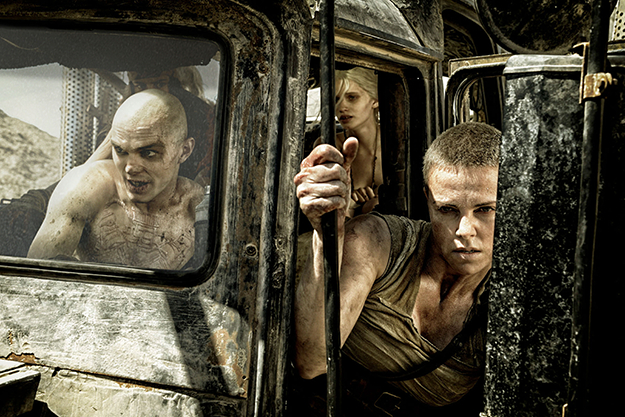
As the narrative hurtles toward its destination, Max is effectively a passenger along for the ride. When the group is threatened on a cerulean blue night, with only three rounds left in their sniper rifle, Max misses his target twice and passes the gun to Furiosa—who nails it with the final bullet. Some have dismissed Max’s backseat role and the foregrounding of a strong woman as feminist pandering, but Miller is only following a fundamental tenet of storytelling—conflict. He puts the focus on these fertile, dangerous women, in opposition to the surrounding barren, poisoned desert. The graffiti they leave behind in Immortan Joe’s mountaintop harem chamber challenges the existing, patriarchal order (“who killed the world?”) and defies the violence that maintains it (“our babies won’t be warlords”). These succinct messages cut deep, and the film is imbued with their essence.
Technically, Fury Road makes sparing use of both dialogue and CGI, and instead takes its cues from early cinema: Miller has cited Kevin Brownlow’s The Parade’s Gone By… as a key source of inspiration, in addition to the work of Buster Keaton and Harold Lloyd. As was the case for those silent pioneers who worked without a net, the stunts in Fury Road use gravity rather than fake it. The feats unfold against the ochre vistas of the Namib desert with a Rube Goldberg sense of physics, one action triggering another, cascading to the point of overload. Besides the War Boys—who drive a fleet of souped-up cars and semis, spew fire from exhaust pipes, vault from poles, and bring a heavy-metal guitarist and drummers for live accompaniment to their carnage—Furiosa, Max, and the brides also fend off Russians driving spine-covered roadsters and a masked clan of motorcycle-riding mountain-dwellers.
While the ever-inventive action spans the entire screen—and, if you’re watching the film in 3-D, the space in front of it—these elaborate running battles remain spatially coherent despite their many moving parts. As Vashi Nedomansky has pointed out in a video essay, this is because Miller keeps the focus of the action squarely in the center of the frame from shot to shot, his discipline and skill serving as a rebuke to lazy, slapdash contemporary directors who use spatial confusion and rapid cutting to gin up excitement, while relying on sound design to orient the viewer. In an ideal world, every action film would be as finely tuned as Fury Road; in our imperfect one, it’s unquestionably among this year’s finest.
Read more about the year’s best in our Essential Films 2015 supplement.



